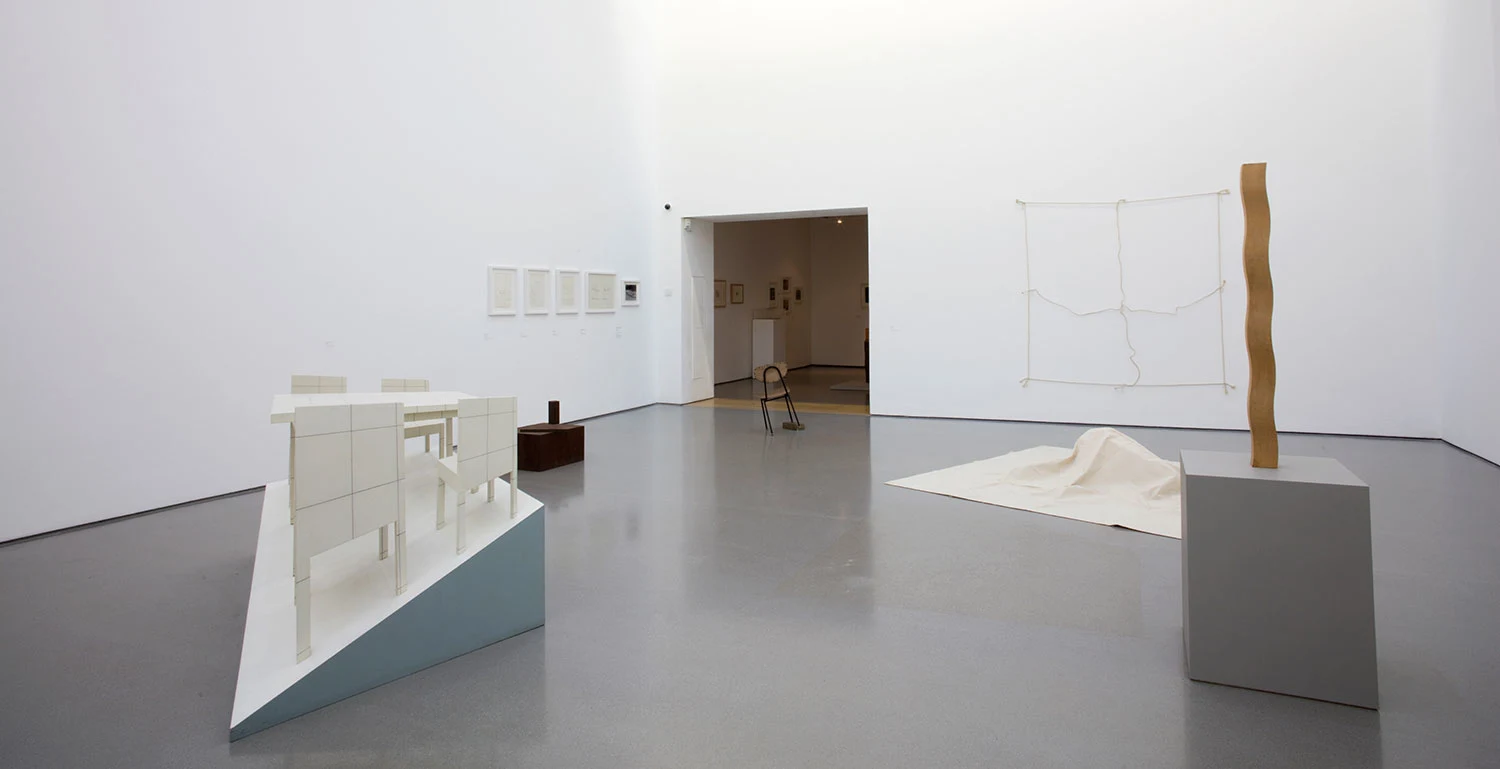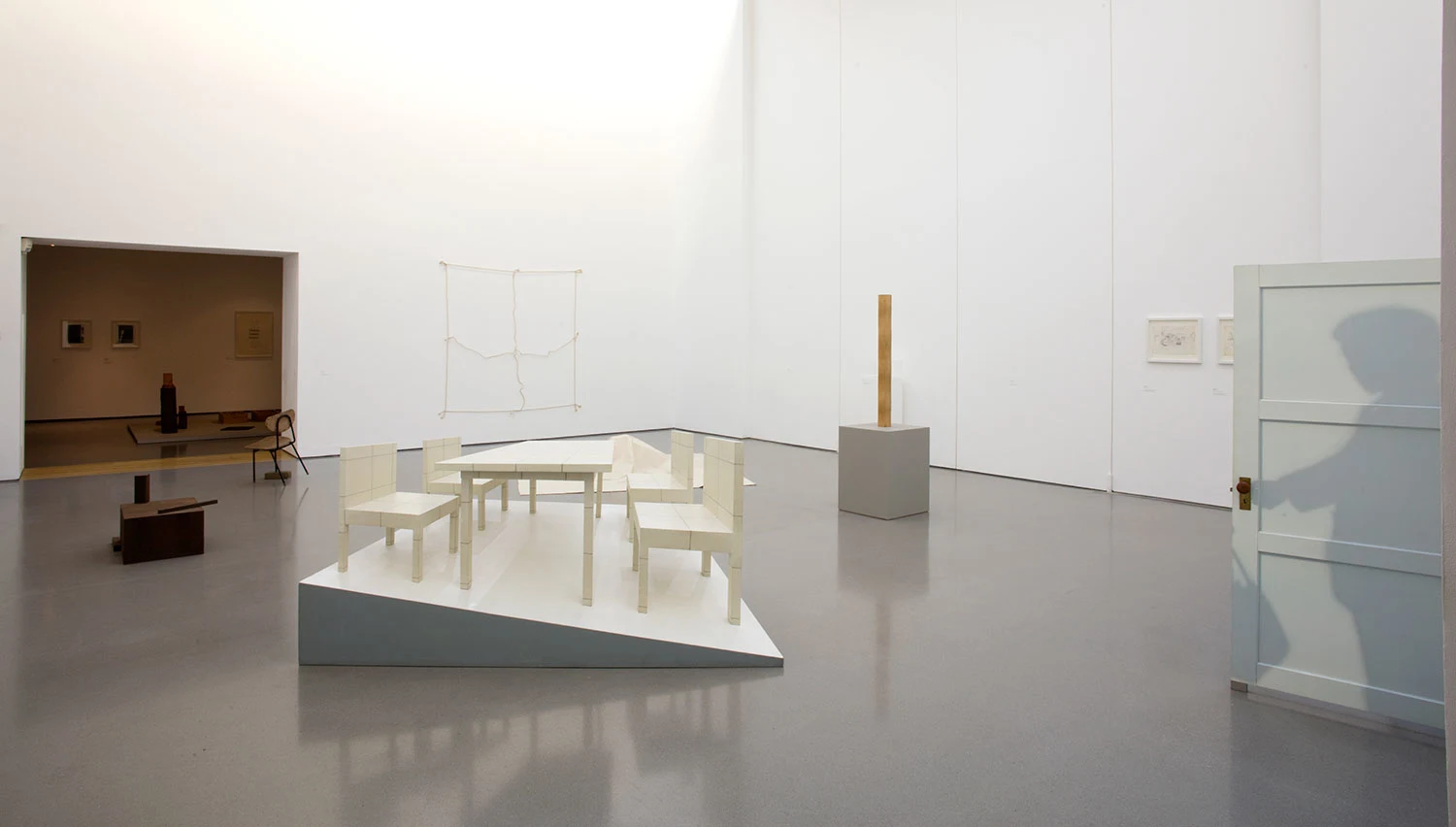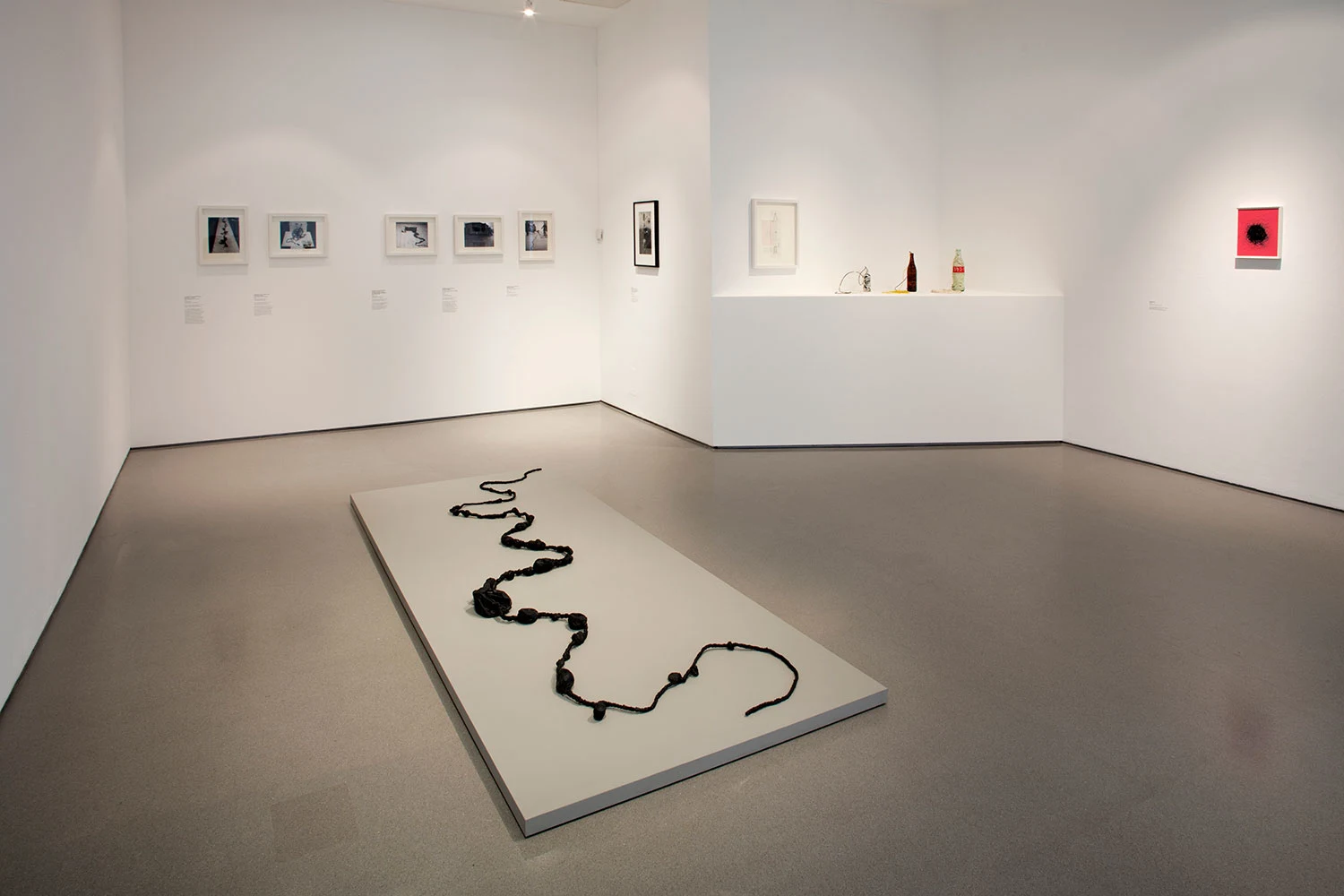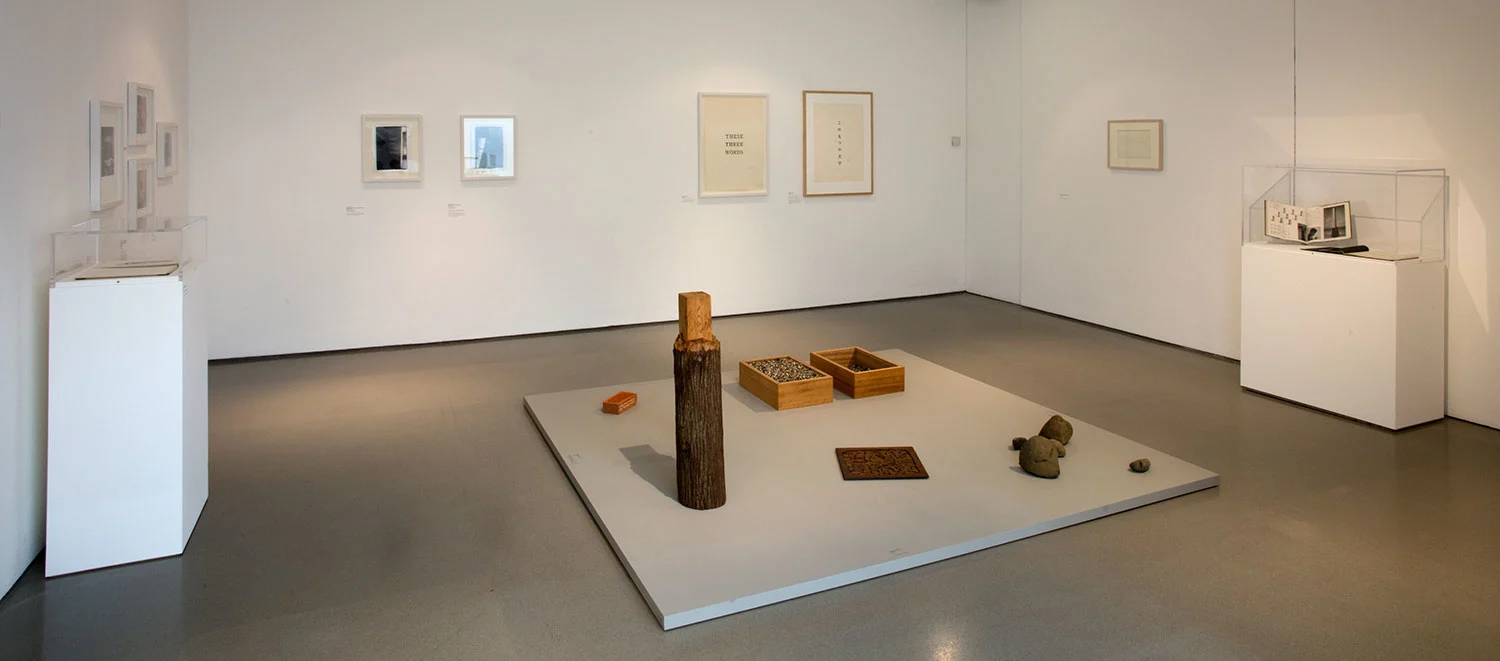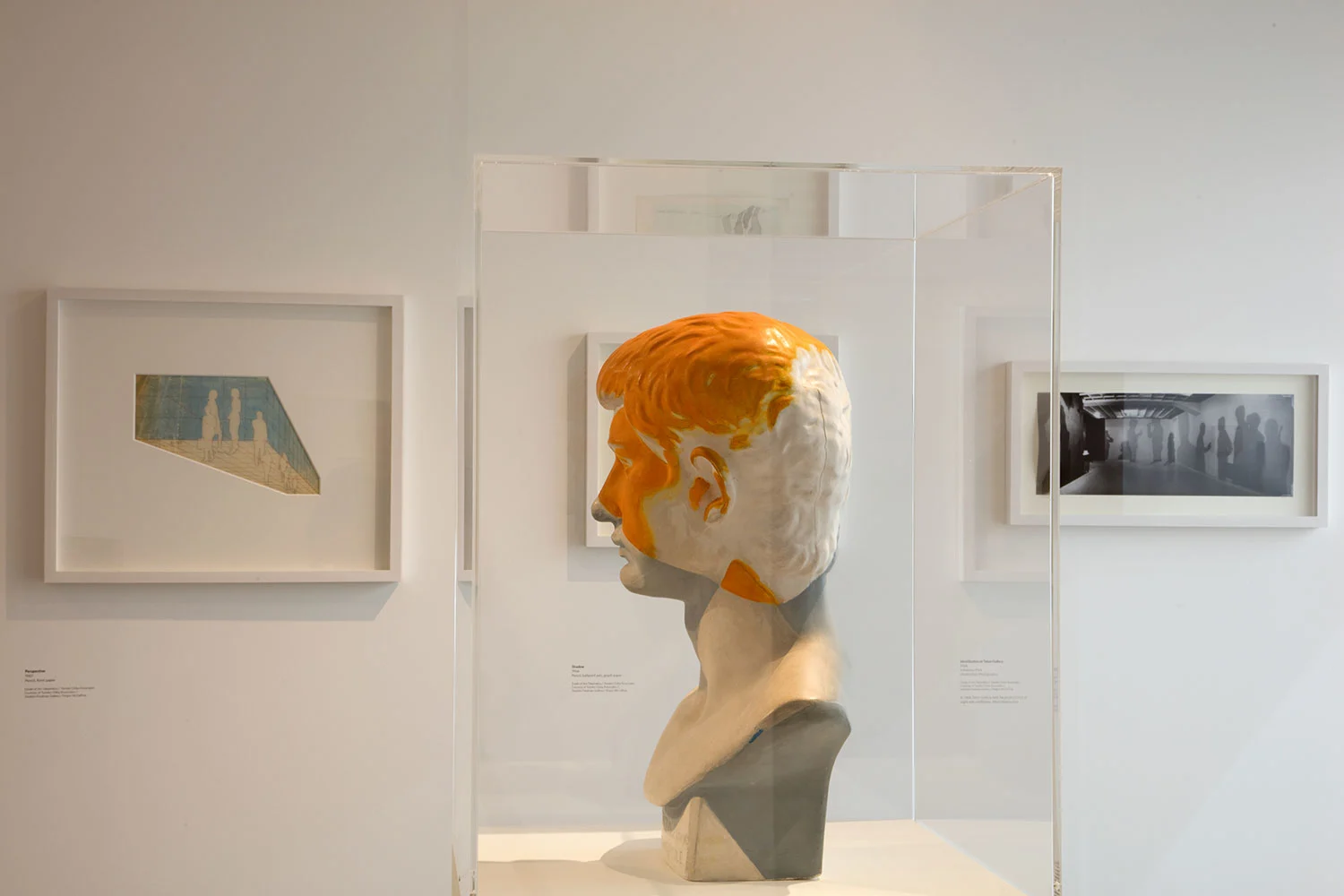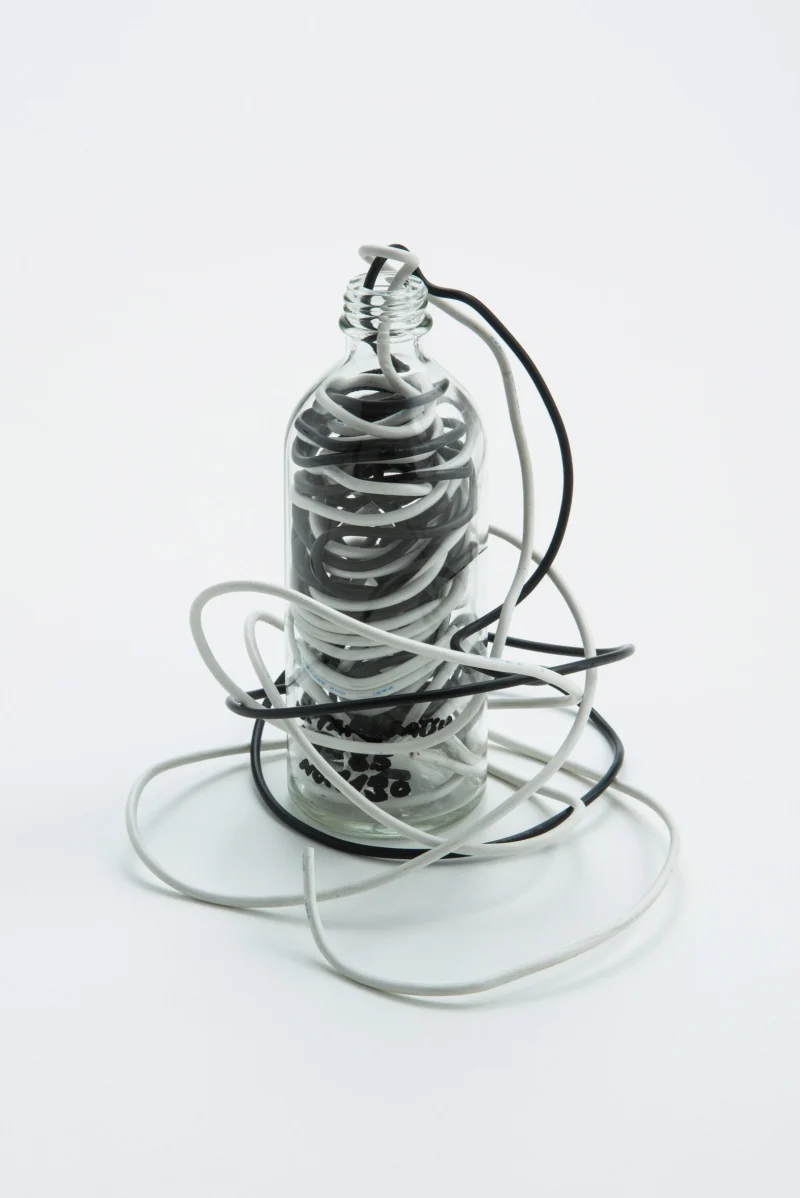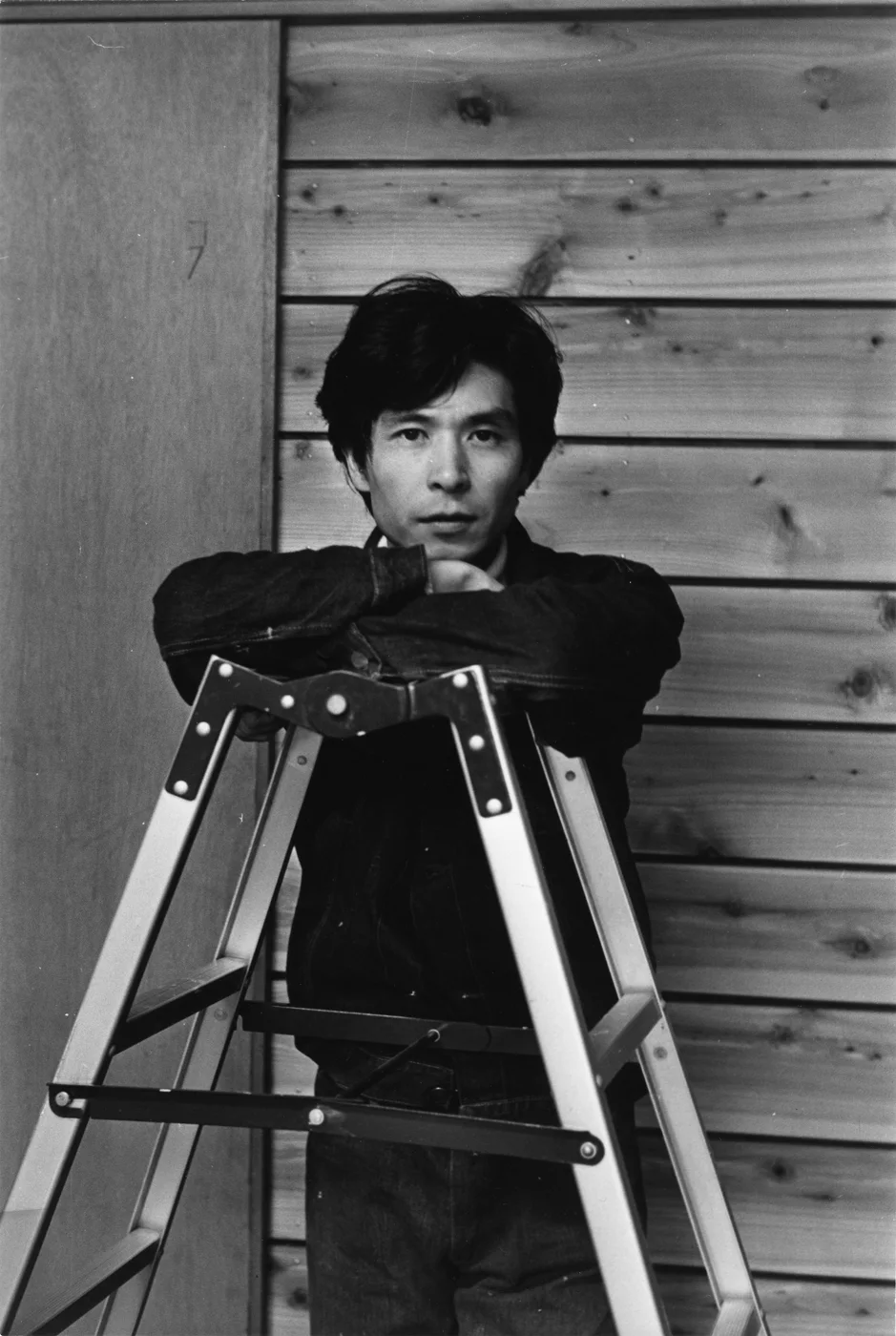
Jiro Takamatsu presents 'The Temperature of Sculpture'
Overview
'The Temperature of Sculpture' is the first institutional solo exhibition of Takamatsu outside of his home country, presenting over seventy works made between 1961 and 1977.
Takamatsu sought out the interplay between presence and absence, carefully thinking through relationships between artwork and its perceiver. He turned to sculpture in 1961, applying sculptural thinking to see how objects might change their ‘temperature’.
The materials Takamatsu chose were always ready at hand. Sometimes they were tangible - everyday objects such as bottles, cloth, string, stones or furniture. Other times they had a strong association to sculptural traditions - such as marble, wood, concrete and iron. Significantly, he made use of intangible properties - perspective, shadows and numbers. These he made material and metaphorical in objects, events and drawings, giving form to the imponderables of space and time.
The exhibition starts with the series named Point (1961-4) where the artist moved from two to three dimensions. Takamatsu expanded the point first into reliefs and, using a single line, brought the artwork into live, three-dimensional space. These works would evolve into the series String (1962-98) and Happenings and Events (1962-5).
The earliest work in our exhibition is a 1961 sculpture formed of a mass of lacquered wire ‘swelling snowman-style’, to use the artist’s words, from a central point. Takamatsu became fascinated by the possibility of a line of string when divorced from function, describing it as an example of ‘minimal materiality’.
In 1962 he made ‘The Yamanote Line Incident’, in which he packed the three-and-a-half kilometre long sculpture ‘String’ into a checked travel bag and let this long, lumpy rope snake from the privacy of his bag onto the platforms and carriages of the looping Yamanote Line, a central Tokyo commuter route. This expansion of string was contrasted by work in which he would contract it into the confined spaces of fizzy-pop and beer bottles.
Many artists in this period tested the limits of sculpture with performance, and in 1964 Takamatsu co-founded Hi-Red Center, an artist collective that brought irreverent actions charged with dissent into the daily life of Tokyo - bags were dropped off high-rise buildings, and streets were scrubbed clean with toothbrushes on the occasion of the 1964 Olympics. He described that this experience ‘engrained in me a habit of questioning, shaking up, and removing everything surplus to the assumptions behind whatever I was creating.’ This principle would remain a guide to his sculptural practice.
Takamatsu explored the differences between the experience of perception and the rules of logic in his series Shadow (1964-98) and Perspective (1966-71). A shadow is a physical effect caused by light being interrupted, but Takamatsu was interested in it as a thing-in-itself rather than a trace. As with all his sculptures, he used objects, and people, ready at hand for his Shadows - it could be a coat hook, a reproduction of a sculpture purchased in a tourist store, or portraits of critics, collectors, curators and artists.
Takamatsu worked on a number of site-specific shadow works - in 1971 he filled the hoardings surrounding a building site with shadows that would intermingle with passers-by. Working with shadows led to his work with single-point perspective, transposing this graphic representation of space into palpable sculptures.
Whether an action, object or drawing, Takamatsu points to the distinctions between palpable things and the values we attribute to them, seeking out the temperature of sculpture.
Jiro Takamatsu: The Temperature of Sculpture is supported by The Japan Foundation, The Great Britain Sasakawa Foundation and the Daiwa Anglo-Japanese Foundation, as well as Yumiko Chiba Associates, who manage the Takamatsu Estate, Stephen Friedman Gallery (London) and Fergus McCaffrey (New York).
Henry Moore Institute
The Headrow
Leeds
LS1 3AH
United Kingdom
Selected Artworks

Installation Views
